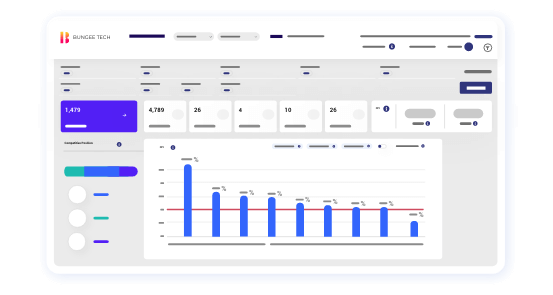4 Product Matching Facts Hurting Brands
Reading Time: 9 Minutes
In 2020, consumer goods manufacturers could hardly catch their breath after explosive ecommerce sales. Now, in 2023, CPG companies are vying for the attention of price-conscious shoppers who are searching for value, experience, and convenience.
Industry analysts predict that we’ll continue to see impactful sales trends. For example, social commerce in the CPG industry is expected to hit $30billion in sales this year.
One thing is certain: Consumer demand and purchase behavior won’t wait for the manufacturers behind the curve.
Specifically, there’s great differentiation in brands’ abilities to match products for price, promotion, assortment, and availability across retailers.
Product matching is a form of data analysis used in e-commerce strategies. It helps brands implement adjustments to meet competitive comparisons. CPG brands that leverage accurate product matching have visibility into the same and similar products on the market and drive price, promotion, and assortment decisions with data.
Thinking about the breadth, depth and similarity of many products, product matching is hard.
Tracking your competitive product set is complex and time-consuming. The reality is – too much data is left off the table – when it should be informing your strategy.
Many CPG brands have relied on a manual approach to understanding and monitoring competitive data and the digital shelf.
In today’s world…
- pricing can change within minutes
- rankings can drop with out-of-stocks
- a consumer can compare similar products with a simple click
…incomplete or poor quality data as a result of flawed product matching means missed insights and missed opportunities.
4 of the Biggest Missed Opportunities
1. You make decisions with a partial picture
The most obvious problem with incomplete or inaccurate product matching is that brands don’t have the right information to inform their pricing, promotion, and assortment decision making.
Let’s assume that your product matching is only 60%-70% accurate.
- What challenges are you blind to?
- Are you comfortable providing leadership with an update on your omnichannel story?
Many CPG brands have operated with a partial picture. But now, accurate, timely and comprehensive product matching is possible and expected.
2. Your competitors have visibility
Just because your company struggles with product matching doesn’t mean that your competitors have the same problem…
Many consumers brands have the ability to understand how their products are performing in the market and respond tactically to improve search ranking while avoiding out of stocks and running successful promotions. These insights improve every day and help brands prepare strategically for the future.
Shoppers look for convenience, product information and pricing to influence their buying decisions according to the Common Thread Collectives report, “Pet Industry Trends, Growth & Statistics in 2021 and Beyond: Unleashing Your Ecommerce Pet Marketing Strategies.”
The lack of visibility is a problem for the past. You should have a reliable view of you and your competitors’ products.
3. You have incorrect or incomplete data for retailer negotiation
According to McKinsey, “the CPG manufacturers that are clearly winning relative to their category are those that have deepened and broadened their collaboration with retail partners, forming power partnerships that yield meaningful growth in both revenue and profit.”
Despite the value of collaborative relationships, they’re often still built on proving mutually beneficial outcomes.
This means you need data to backup concerns and ideas.
- You can’t question pricing compliance without absolute data.
- You can’t talk about competitive positioning without pinpointing specifics.
- You can’t do any of it without accurate product matching.
Investing in data and analytics is an investment for better relationships with your retail partners.
4. You waste time on tactical problems rather than building a winning strategy
Trying to get a more complete picture of your e-commerce landscape by increasing the manual resources dedicated to it? Tay might result in marginal improvements but a limited impact on quality.
What sounds better? More manual work or automation?
With high-quality data feeds and analytics dashboards, you can spend time using product matching insights to enrich your brand strategy and competitive positioning.
The reality is: Manufacturers will continue to innovate and adapt to the changing needs of consumers. To offer real value, you have to understand other price strategies or take advantage of opportunities like competitor out of stocks. Agility is key and is driven by the projection that CPG omnichannel dollar sales growth for 2023 is 5.5%.
How this pie gets divided will depend on the steps you take today… Build and act on omnichannel intelligence, collaborate with retail customers, and grow your business!

The Latest Insights – Straight to Your Inbox
Sign up for the Bungee Tech mailing list for actionable strategies, upcoming events, industry trends, and company news.














